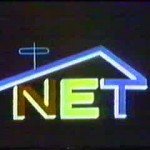 Scan the tv channels and discover that there are 500 choices of entertainment in HD, and little of it worth watching. We didn’t have all these options years ago. “Back in the old days”, in Seattle-Tacoma, we had 8 channels, KTPS 62, KPEC 56, and KCTS 9 were affiliates of NET, the National Educational Television Network (1963), which later became PBS (1969). Mr. Rogers’s Neighborhood and Friendly Giant were the children’s programs I can recall from NET. There were programs made in the USA and also a few Canadian imports. Sesame Street, ZOOM, and Electric Company were developed during the 70s. After that, PBS began churning out cartoons and the educational station started to be less like a classroom and more like a playground. As television grew, PBS had to compete with commercial television and cartoons became part of that. Ringo Starr and George Carlin appeared as regular characters in Shining Time Station. That program was one of many approved by parents and it spawned a collection of toys, as did a few other PBS programs of the times. KPEC moved from Channel 56 to Channel 13 in the 1970s after KTVW went through bankruptcy and was picked up by the Clover Park School District. The call letters were changed to KCPQ and the station carried PBS programming. Kelly Broadcasting of Sacramento bought Channel 13 years later. Eventually, KCPQ was bought by the FOX Corporation.
Scan the tv channels and discover that there are 500 choices of entertainment in HD, and little of it worth watching. We didn’t have all these options years ago. “Back in the old days”, in Seattle-Tacoma, we had 8 channels, KTPS 62, KPEC 56, and KCTS 9 were affiliates of NET, the National Educational Television Network (1963), which later became PBS (1969). Mr. Rogers’s Neighborhood and Friendly Giant were the children’s programs I can recall from NET. There were programs made in the USA and also a few Canadian imports. Sesame Street, ZOOM, and Electric Company were developed during the 70s. After that, PBS began churning out cartoons and the educational station started to be less like a classroom and more like a playground. As television grew, PBS had to compete with commercial television and cartoons became part of that. Ringo Starr and George Carlin appeared as regular characters in Shining Time Station. That program was one of many approved by parents and it spawned a collection of toys, as did a few other PBS programs of the times. KPEC moved from Channel 56 to Channel 13 in the 1970s after KTVW went through bankruptcy and was picked up by the Clover Park School District. The call letters were changed to KCPQ and the station carried PBS programming. Kelly Broadcasting of Sacramento bought Channel 13 years later. Eventually, KCPQ was bought by the FOX Corporation.
The three main network stations were KOMO (ABC), KING (NBC), and KIRO (CBS). The CBS affiliation went back and forth between KIRO and KTNT Channel 11 (now KSTW CW 11) in the late 50s, and early 60s, then again in the mid-90s, due to ownership changes and some national station swapping by the corporate owners of these stations.
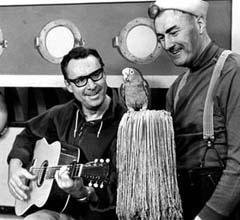 KOMO 4 had a program for children called Captain Puget. One recurring guest on the show was Ivar Haglund, owner of Ivar’s restaurants, local personality, and singer of old sea shanties. This was #4 on my list of favorites. I found the emphasis on travel and Pacific Northwest folklore to be kind of boring. I was watching TV cartoons. That was the name of the game before and after school. Captain Puget was on in the afternoon block of children’s programming that was observed by most stations in the period after school and before the 6 O’Clock news. Milt Furness, Bill Brubaker, Jim Harriot, and Ruth Walsh were the local news anchors during the early years. The fastest-talking weatherman in history was Ray Ramsey. You just looked at the graphics and tried to keep up with the words Ray Ramsey spoke with his machine gun-style delivery. Bruce King was the sports anchor and he was a big guy. He looked like he had done some boxing or pro football in his time.
KOMO 4 had a program for children called Captain Puget. One recurring guest on the show was Ivar Haglund, owner of Ivar’s restaurants, local personality, and singer of old sea shanties. This was #4 on my list of favorites. I found the emphasis on travel and Pacific Northwest folklore to be kind of boring. I was watching TV cartoons. That was the name of the game before and after school. Captain Puget was on in the afternoon block of children’s programming that was observed by most stations in the period after school and before the 6 O’Clock news. Milt Furness, Bill Brubaker, Jim Harriot, and Ruth Walsh were the local news anchors during the early years. The fastest-talking weatherman in history was Ray Ramsey. You just looked at the graphics and tried to keep up with the words Ray Ramsey spoke with his machine gun-style delivery. Bruce King was the sports anchor and he was a big guy. He looked like he had done some boxing or pro football in his time.
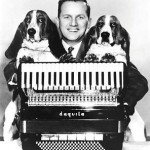 KING 5 had the Stan Boreson show, known as King’s Klubhouse, every afternoon. #3 on my list of favorite kid shows, Stan Boreson and his dog Nomo were entertaining and kind of corny, but good fun for kids and some great cartoons. Local news that followed the show was anchored by Ted Bryant and Charles Herring. The weather was presented by Bob Cram. Bob was one of the early “cartooning weathermen”. Rather than the fancy weather graphics we see today, Bob Cram would quickly draw a picture as he gave the weather forecast. It was usually a caricature of some funny-looking guy walking through water puddles on rainy days or laying on the beach on sunny days. Following the local news, NBC had the nightly Huntley-Brinkley Report. Chet Huntley [who started his career in Seattle] and David Brinkley were Walter Cronkite’s competition. As I recall, we watched KING 5 local news but switched to Channel 7 for old, trustworthy Uncle Walter.
KING 5 had the Stan Boreson show, known as King’s Klubhouse, every afternoon. #3 on my list of favorite kid shows, Stan Boreson and his dog Nomo were entertaining and kind of corny, but good fun for kids and some great cartoons. Local news that followed the show was anchored by Ted Bryant and Charles Herring. The weather was presented by Bob Cram. Bob was one of the early “cartooning weathermen”. Rather than the fancy weather graphics we see today, Bob Cram would quickly draw a picture as he gave the weather forecast. It was usually a caricature of some funny-looking guy walking through water puddles on rainy days or laying on the beach on sunny days. Following the local news, NBC had the nightly Huntley-Brinkley Report. Chet Huntley [who started his career in Seattle] and David Brinkley were Walter Cronkite’s competition. As I recall, we watched KING 5 local news but switched to Channel 7 for old, trustworthy Uncle Walter.
 The most popular kid show was JP Patches (Chris Wedes), the mayor of the city dump. This KIRO 7 TV clown entertained the kiddies mornings and afternoons, with cartoons, Superman re-runs, and humor. Some of the jokes were over the heads of the kids but had adults rolling on the floor. JP and sidekick/girlfriend Gertrude the telephone operator was #1 with most baby boomer kids that grew up in the Pacific Northwest. KIRO 7 local news was anchored by Cliff Kirk and a little hottie named Sandy Hill. She would have been the only reason any teenage boy watched the TV news. KIRO was owned by the Mormon church and the newscasts featured editorial commentary from Lloyd Cooney. Bob Hale was the cartooning weatherman in the early years before Harry Wappler entered the picture. Sports anchor was Ron Forsell. Ron also anchored one of the early Northwest wrestling shows on Saturday afternoon.
The most popular kid show was JP Patches (Chris Wedes), the mayor of the city dump. This KIRO 7 TV clown entertained the kiddies mornings and afternoons, with cartoons, Superman re-runs, and humor. Some of the jokes were over the heads of the kids but had adults rolling on the floor. JP and sidekick/girlfriend Gertrude the telephone operator was #1 with most baby boomer kids that grew up in the Pacific Northwest. KIRO 7 local news was anchored by Cliff Kirk and a little hottie named Sandy Hill. She would have been the only reason any teenage boy watched the TV news. KIRO was owned by the Mormon church and the newscasts featured editorial commentary from Lloyd Cooney. Bob Hale was the cartooning weatherman in the early years before Harry Wappler entered the picture. Sports anchor was Ron Forsell. Ron also anchored one of the early Northwest wrestling shows on Saturday afternoon.
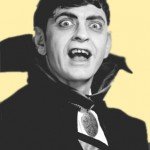 KIRO also had a vampire that hosted the late-night thriller-chiller movie. Joe Towey was The Count, rising out of his coffin to scare us and talk about the scary movie we were watching. There were some corny gags and some pretty boring movies, not really scary. But, we stayed up late and watched it, because it was still good late night TV entertainment. Joe Towey was also the director of the JP Patches show for over 20 years. Channel 7 had a lot of local talent over the years.
KIRO also had a vampire that hosted the late-night thriller-chiller movie. Joe Towey was The Count, rising out of his coffin to scare us and talk about the scary movie we were watching. There were some corny gags and some pretty boring movies, not really scary. But, we stayed up late and watched it, because it was still good late night TV entertainment. Joe Towey was also the director of the JP Patches show for over 20 years. Channel 7 had a lot of local talent over the years.
 The Brakeman Bill Show with sidekick [hand puppet] Crazy Donkey (the creation of announcer Warren Reed), was a close second to JP Patches on my list. This KTNT TV 11 program featured the classic Popeye cartoons and Bugs Bunny, plus a huge electric train set in the studio that Brakeman Bill operated. Channel 11 was just up the street from my elementary school in Tacoma in the 60s. Lucky kids on the waiting list got to be in the audience or be part of the show.
The Brakeman Bill Show with sidekick [hand puppet] Crazy Donkey (the creation of announcer Warren Reed), was a close second to JP Patches on my list. This KTNT TV 11 program featured the classic Popeye cartoons and Bugs Bunny, plus a huge electric train set in the studio that Brakeman Bill operated. Channel 11 was just up the street from my elementary school in Tacoma in the 60s. Lucky kids on the waiting list got to be in the audience or be part of the show.
Also in the building at 11th & Grant, was KTNT 1400 AM & 97.3 FM (later KNBQ, KBSG and now KIRO FM) I had the chance to hang out there on weekends talking to Bruce Vanderhoof and some of the other DJs. They, like Robert O. Smith of KTAC, and Big Ed Dollar and Chuck Ellsworth of KMO, were kind enough to let me watch them play the records, and they took the time to answer my questions about the radio business.
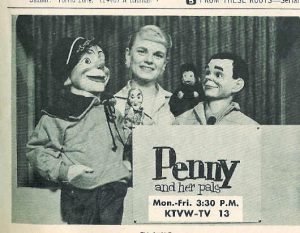 KTVW Channel 13, was low-budget, black and white programming with a few kid shows and some very ancient cartoons. The afternoon show was Penny & Her Pals. Puppets again. This show never really appealed to me. The picture on Channel 13 seemed grainy or washed out, probably due to the ancient equipment of the station, which eventually went bankrupt. KTVW became KPEC, a property of Clover Park Vocational Technical Institute. The call letters later changed to KCPQ and the station was sold to a California broadcaster who brought COLOR cameras and quality programming to the Tacoma station. The station later became an affiliate of FOX and is now owned by the Tribune company (WGN Chicago, among other properties).
KTVW Channel 13, was low-budget, black and white programming with a few kid shows and some very ancient cartoons. The afternoon show was Penny & Her Pals. Puppets again. This show never really appealed to me. The picture on Channel 13 seemed grainy or washed out, probably due to the ancient equipment of the station, which eventually went bankrupt. KTVW became KPEC, a property of Clover Park Vocational Technical Institute. The call letters later changed to KCPQ and the station was sold to a California broadcaster who brought COLOR cameras and quality programming to the Tacoma station. The station later became an affiliate of FOX and is now owned by the Tribune company (WGN Chicago, among other properties).
KTVW Channel 13’s Stu Martin hosted the late-night movie called the Double Date, which featured two movies and Stu usually appeared with two lovely ladies by his side on each show.
The concept was altered a bit when Lee Perkins took over hosting duties years later. Perkins’ witty and sometimes corny humor punctuated the breaks during the feature presentations. Again, these late-night movies were B-grade at best, but we watched mainly to see the local personalities that hosted these shows. These local celebrities had a following. They could gather a crowd of fans at every personal appearance they made.
Another late-night host on Channel 13 was Bob Corcoran. His controversial talk show was sponsored by the B&I Circus Store and other local businesses. The callers were either fans or haters. I am not certain there was a call-screener on duty, or whether every caller was automatically put through to the host. Some of the comments were rude and the technicians in the booth would have to hit the kill button on the sound quite often. Teenagers loved to call the show and give him a bad time. It was very entertaining, LIVE, local television.
Mornings, after school and late at night, there always seemed to be something cool to see on TV, back in the good ol’ days.
Do you remember Flash Blaidon on Channel 13? Under the Blaidon Mutual Investors Corporation ownership, programming on KTVW improved somewhat. Color programs came to Channel 13, along with more local content.
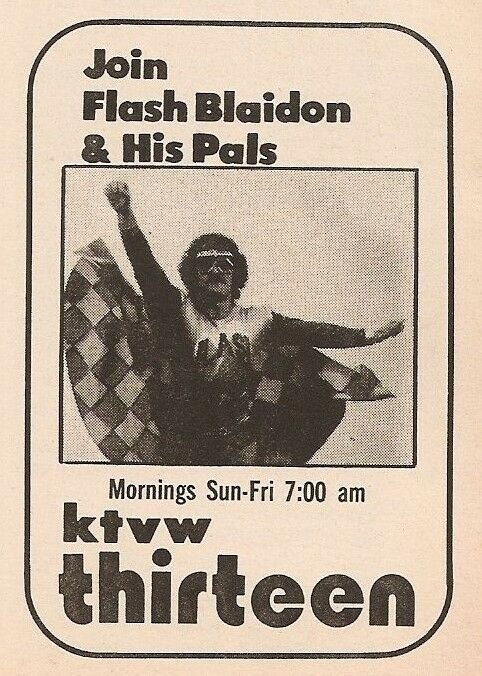

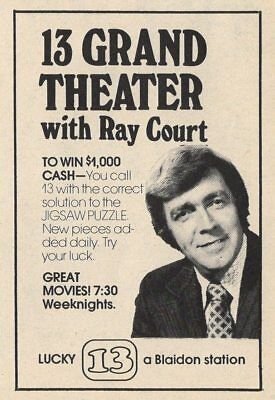
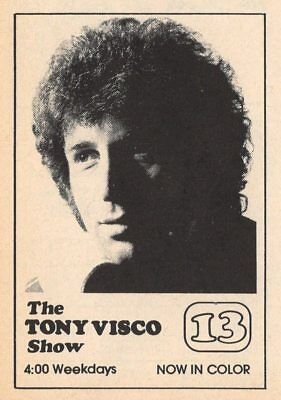



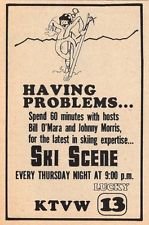

Lou Robbins — Admin/Editor | Airchecks
KTOY | KVAC (WA-1974) | KDFL (WA-1975) | KTTX (TX- 1976) | KWHI (TX-1976) | KONP (WA-1977) | KBAM (WA-1978) | KJUN (WA-1983) | KRPM (WA-1984) | KAMT (WA-1986) | KASY (WA-1988) | KBRD (WA-1989) | KTAC (WA-1990) | KMTT (WA-1991) | KOOL (AZ-1994)


I was told by my mom,Naomi or her stage name in Hollywood was Carol King.She said her and Stan Boreson did the first color tv show in Seattle on KOMO tv. I can’t seem to find much on my mom,and I’d like to find the Linden records that my mom sang on. Thank you 👍😎🎬
Here is some info:
Info on Art Linden’s empire at https://www.historylink.org/file/7772
The discography of Linden Records at https://www.discogs.com/label/661694-Linden-Recordings
Carol King’s recording on Linden at http://nwmusicarchives.com/label/linden-records/
Carol King “Naomi” http://nwmusicarchives.com/artist/king-carol/
Stan Boreson was working for KOMO’s competition, KING Channel 5.
Good luck with your research!
If it was the first local color TV program in Seattle, it was definitely KOMO. They acquired color cameras in 1956, nearly 10 years before the other local stations.
This from the Tacoma News Tribune… KING 5 began color demonstrations as early as 1954, https://qzvx.com/wp-content/uploads/2023/04/The_Tacoma_News_Tribune_Thu__Dec_16__1954_-scaled.jpg . See Saturday, 10 am. KING continued the demonstrations and color test pattern into 1955.
Color demonstrations began at KOMO in 1956.
On Tuesday, April 28, 1958, KOMO 4 became the first Seattle tv station to begin airing regular programs in color. https://qzvx.com/wp-content/uploads/2023/04/The_Tacoma_News_Tribune_Sun__Apr_20__1958_-scaled.jpg
Stan Boreson was still employed at KING 5 at the time KOMO began color broadcasts. KOMO had Captain Puget. Just to clear up any confusion there.
KING 5 began broadcasting some network programming in color, after swapping networks with KOMO in 1959.
Stan Boreson and KING 5 news were in color by 1962.
KIRO aired news and local programming in black and white until color came to select KIRO network programs sometime after September 1962. Very limited.
JP Patches was in color by Springtime 1964.
I and my brother witnessed color television for the first time in 1964 when Slattery’s People premiered on CBS. A neighbor family had a color television. Reception was poor, as the father seemed to be using only the rabbit ears connected to the tv. And he was drunk. It was not a pleasant experience. The odor of 2nd hand booze heavy in the air as everyone is gathered in front of the tv, the father cursing and trying to adjust the wavy, scrambled picture.
Ahhhh yes, those were the days.
Personally, the only way I can watch TV is with some 1st hand booze close at hand.
Initial color programming for KOMO 4 were local late night newscasts in 1956.
Tony Visco once told the Seattle Times that he anticipated a syndication deal. The Tony Visco show on Channel 13 was cringe-worthy. It reminds me of a Sammy Maudlin SCTV sketch
April fools day of ’74 we filled Mr. Cooney’s office with balloons. Got his secretary in on the gag. Lloyd had fun with it!
These days, the news anchors would bring those balloons onto the set and try to balance them on their noses while reading the news. Everyday fools.